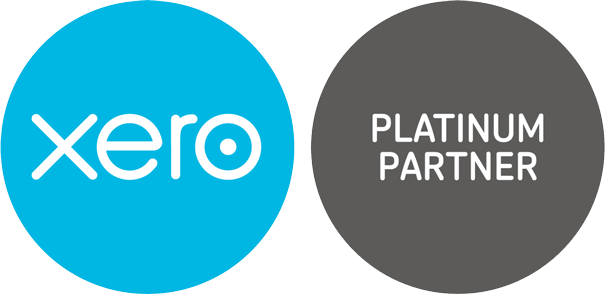Blog
Making Tax Digital Explained: How It Works and What You Need to Know
29 September 2025
Making Tax Digital (MTD) is a government initiative designed to modernise the UK tax system by moving it into a fully digital framework. HM Revenue and Customs (HMRC) has made clear its intention to transform the way individuals, landlords, and businesses report their tax affairs. Instead of relying on traditional self-assessment tax returns and manual paperwork, the system now requires taxpayers to keep digital records and use MTD-compatible software to submit quarterly updates.
The primary goal of MTD is to reduce errors, simplify the process of paying tax, and improve overall efficiency. For many taxpayers, this means getting comfortable with digital tools, accounting software, and online submissions. It also means adopting a mindset where tax administration is no longer a once-a-year activity but rather a continuous process of record keeping throughout the relevant tax year.
The Purpose Behind Making Tax Digital
The government’s rationale for Making Tax Digital is straightforward: to make the tax system more accurate, transparent, and user-friendly. Each year, billions of pounds are lost due to mistakes in self-assessment tax returns, whether through miscalculations, missing income sources, or incomplete records. By requiring electronic records and digital submissions, HMRC hopes to:
- Reduce tax gaps caused by human error.
- Provide taxpayers with an up-to-date income tax position throughout the year.
- Streamline communication through electronic channels
- Encourage businesses and individuals to adopt modern digital tools
Ultimately, the move to a digital tax system benefits both HMRC and taxpayers, giving everyone more confidence in the accuracy of tax affairs.
Who Needs to Comply with Making Tax Digital?
VAT Registered Businesses
Initially, MTD applied to VAT-registered businesses with taxable turnover above the VAT threshold. Since April 2022, it has become compulsory for all VAT-registered businesses, regardless of turnover, to comply with digital VAT returns.
Self-Employed Individuals and Sole Traders
Self-employed individuals earning above the MTD threshold in business income will need to maintain digital records and submit quarterly updates through MTD-compatible software.
Property Businesses and Landlords
Property income also falls within the scope of MTD. Landlords with gross income exceeding the qualifying income threshold must transition to MTD for income tax.
Understanding the MTD Threshold and Qualifying Income
The threshold for MTD for income tax is currently set at £50,000 in gross income per relevant tax year. Qualifying income includes:
- Profits from self-employment
- Gross property income from UK or overseas properties
- Income from trade or property business
Taxpayers with qualifying income below the threshold are not yet required to comply but can voluntarily join the pilot scheme.
How Making Tax Digital Works in Practice
Digital Record Keeping
Taxpayers must keep records in electronic form, storing details of business income and expenses using approved accounting software. Handwritten ledgers are no longer acceptable.
Compatible Software and Digital Links
MTD compatible software must be used to keep, update, and submit tax information. HMRC requires digital links to ensure data flows seamlessly between systems without manual re-entry.
Quarterly Updates and Period Statements
Every calendar quarter, taxpayers must submit quarterly updates showing income and expenses. These updates provide HMRC with a real-time view of a taxpayer’s income tax position, reducing surprises at year’s end.
Income Tax and Self Assessment Under MTD
Self-Assessment Tax Returns vs Digital Submissions
Under the current system, taxpayers file a self-assessment tax return once a year. Under MTD, quarterly submissions replace this approach. A final declaration at year’s end confirms accuracy and replaces the old self-assessment tax return.
Calculating Tax Liability and Payments
Quarterly updates help taxpayers estimate their self-assessment tax bill in advance. This allows better planning of tax payments and avoids last-minute shocks.
MTD for Income Tax: Step-by-Step Process
- Register for MTD – inform HMRC of your obligation.
- Choose MTD Software – select an HMRC-recognised package.
- Keep Electronic Records – record income and expenses digitally.
- Submit Quarterly Updates – provide income and expenditure every 3 months.
- Check Your Income Tax Position – monitor your tax liability throughout the year.
- Final Declaration – submit a period statement at the end of the tax year confirming total income.
VAT Returns and the Transition to Digital Filing
MTD started with VAT, requiring digital VAT returns to be filed via approved software. Businesses must now ensure VAT returns are submitted through a digital system and supported by digital links. Bridging software is available for businesses using spreadsheets.
Corporation Tax and Future Expansion of MTD
Although corporation tax is not yet included, HMRC has signalled that it will eventually extend MTD to limited companies. This will bring all business income into the same digital system.
Software Choices: MTD Compatible Packages and Bridging Software
Benefits of Using Accounting Software
- Automates record keeping
- Provides real-time tax liability updates
- Simplifies quarterly submissions
- Improves compliance with HMRC rules
Ensuring Reliable Internet Access
A reliable internet connection is essential for submitting quarterly updates, especially for small businesses in rural areas.
Penalties and Compliance Rules
Penalty Point System and Late Submission
MTD introduces a points-based system for late submissions. Each missed quarterly update adds a penalty point, and penalties apply once a threshold is reached.
HM Revenue and Electronic Communication
All communication with HMRC will move towards electronic methods, reducing delays associated with postal correspondence.
Special Cases in Making Tax Digital
Religious Societies and Exemptions
Some religious societies and digitally excluded individuals may apply for exemptions from MTD.
Businesses with More Than One Agent
HMRC allows multiple agents to access digital tax accounts, provided software packages support this function.
Testing Phase, Pilot Scheme and Rollout Timeline
HMRC continues to test MTD through pilot schemes before fully enforcing the rules. Businesses can join voluntarily to trial the system before they are legally required.
Advantages of Moving to a Digital Tax System
Efficiency and Reduced Errors
Digital tools minimise the risk of human error in calculations and record-keeping.
Better Tax Affairs Management
Taxpayers can monitor their income tax position more frequently, helping them manage finances more effectively.
Transparency with HMRC
Quarterly updates ensure HMRC always has accurate data, improving transparency.
Challenges and Concerns with MTD
Small Businesses and Turnover Thresholds
Some small businesses worry about the cost of MTD software and whether they meet the turnover threshold.
Record Keeping and Digital Literacy
For those unfamiliar with digital recordkeeping, the transition may require additional training or external support.
Practical Steps to Get Started with Making Tax Digital
Choosing the Right MTD Software
Research HMRC’s list of approved software packages and select one that fits your business income and property business needs.
Setting Up Digital Record Keeping
Begin recording income, expenses, and tax affairs digitally, ensuring compliance with electronic record-keeping rules.
Preparing for Quarterly Submissions
Organise your accounting calendar around quarterly submissions to avoid late submission penalties.
Frequently Asked Questions (FAQs)
What is the current threshold for MTD for Income Tax?
The threshold is £50,000 in gross income from trade or property business.
Do landlords need to comply with MTD rules?
Yes, landlords with property income above the MTD threshold must comply.
What counts as qualifying income under MTD?
Qualifying income includes self-employment profits and gross property income.
Can more than one agent access a digital tax account?
Yes, HMRC allows multiple agents, provided the software supports it.
How do penalty points work under the new rules?
Each late submission earns a penalty point. Reaching the penalty threshold results in fines.
What software packages are recognised by HMRC?
HMRC provides an official list of recognised MTD software packages on its website.
Conclusion
Making Tax Digital explained: how it works and what you need to know is essential for anyone with a qualifying income. The shift from paper records and annual self-assessment tax returns to digital record keeping, quarterly submissions, and electronic communications is a significant change. Yet, it brings efficiency, accuracy, and clarity to tax affairs.
Whether you’re a sole trader, landlord, or VAT-registered business, now is the time to prepare for MTD. Choosing the right software and understanding your tax liability throughout the tax year will keep you compliant and penalty-free.
At 10CA, we specialise in guiding businesses and individuals through the MTD transition. From selecting the best MTD compatible software to ensuring smooth quarterly submissions, we provide the expertise you need to stay compliant with HMRC’s digital tax system. Contact 10CA today to simplify your tax affairs and embrace the new digital system with confidence.
Disclaimer
This article is for general information only and does not constitute tax, legal, or financial advice. While we aim to ensure accuracy, HMRC rules may change. Always seek professional guidance or consult HMRC for advice specific to your circumstances. 10CA accepts no liability for any loss arising from reliance on this content.
Case Studies
-

A shared passion for architecture and a head for numbers
-

Sometimes a business does exactly as it says on the tin
-

A modern approach required for music moguls
-

Customer care is top of the list for packaging business
-

A taste for growth, a thirst for knowledge
-

Smiles all round for dental practice
-

Taxing demands with old school charm
-

Cut above the rest in personal management style
-
Child's play with proactive accounts management


